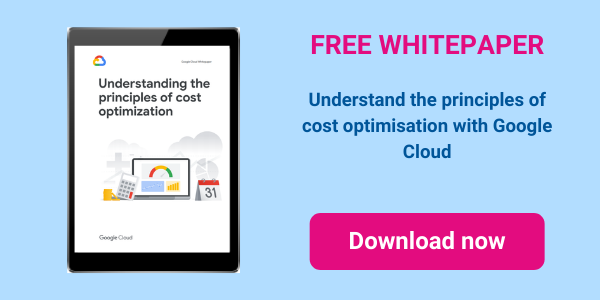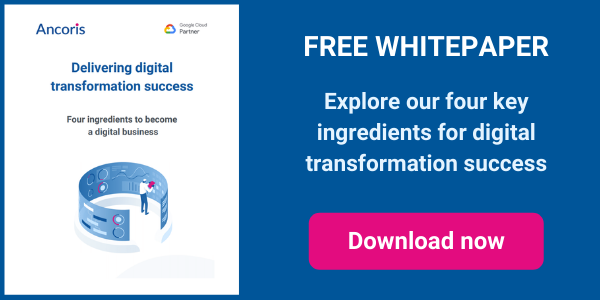We all know how the IT industry loves to use buzzwords for products those words don't really apply to. That's the case with cloud computing, which is all too often mis-applied to old-fashioned hosting. So what’s the difference?
Both cloud services and old-fashioned hosted services are hosted off-site and accessed through an Internet connection. But the way they work under the bonnet is very different — and that has a big impact on how well your IT will support your business in the future, in a world where collaboration, innovation and digital transformation are the keys to success.
Hosted applications are typically purchased and owned by your business, installed on a remote server and accessed over a secure network connection using client software installed on the user's device. These applications are not typically web-enabled and require network infrastructure capable of running a virtual private network (VPN) and enabling software such as Remote Desktop/Terminal Services or Citrix.
Cloud applications are fully web-enabled, so that all you need to use them is a web browser running on any device in any location. You can run your own software in a cloud set-up, either using Infrastructure as a Service (IaaS) or Platform as a Service (PaaS). Or you can use apps, such as Google Workspace, which are provided as Software as a Service (SaaS), supporting many businesses using shared infrastructure.
The benefits of cloud computing include greater flexibility and agility, together with cost savings and improved business resilience. The specific benefits your business sees will depend partly on what kind of cloud computing you choose to use.
Infrastructure as a Service (IaaS)
IaaS gives you access to resources such as servers (sometimes referred to as compute resources), bandwidth, network connections and storage capacity. While the cloud provider takes care of running the data centres where all the physical hardware is located, you are entirely responsible for configuring and maintaining any operating systems and applications running on that infrastructure. Google Cloud Platform, Compute Engine, Google Cloud Storage and the Google Network are all examples of IaaS solutions.
The main benefits of IaaS are:
- greater flexibility and scalability, as you can add more servers or disks in minutes, although you will still need to spend time on configuration.
- increased resilience, as your systems are running in a highly fault-tolerant environment. Your data is securely replicated across multiple data centres and if a server or storage device fails, another identical instance will be spun up before you’ve even noticed.
- improved security, with sophisticated access and intrusion detection in Google’s data centres, custom server hardware designed for security as well as performance, and end-to-end encryption of network traffic on the Google Cloud Network.
Platform as a Service (PaaS)
PaaS adds a layer of tools running on top of the base infrastructure to create a complete environment for developing and deploying software quickly. This typically includes databases, file storage and software development tools, as well as the operating system. The cloud provider makes sure all of this keeps running smoothly and securely, letting your team focus on coding, testing and deploying applications. Examples of PaaS solutions include: App Engine, Google Cloud’s serverless application platform for apps and back ends; BigQuery, a fully managed scalable data warehouse; artificial intelligence and machine learning tools such as Vision AI and Video AI; Google Maps Platform for adding location intelligence to your operations; and support for containerisation through Google Kubernetes Engine.
While you’ll enjoy many of the same benefits you’ll see with IaaS, the real advantages of PaaS are:
- fast development and deployment, with your developers not only able to use familiar software development environments but also tap into a range of APIs and other tools to quickly add complex features such as route planning or automatic tagging of images and video. You can also create development, staging and production environments that are identical, giving you confidence that when you go into production, you won't encounter any nasty configuration surprises.
- scalable, on-demand computing power, with systems able to tolerate extreme spikes in traffic, so you can automatically scale from no traffic to millions of requests per second, in seconds — and scale back down again when demand drops. With per-minute pricing, you’ll also only pay for what you use, so you won’t face the traditional cost penalty of having to scale your systems for peak demand.
- less time spent on managing your infrastructure, as the cloud provider handles routine management tasks such as monitoring and logging, rolling out security patches and load balancing. Your in-house team can focus on work that adds value to your business and helps you compete.
Software as a Service (SaaS)
SaaS sees the cloud provider assume complete responsibility for everything that's needed to deliver an application to your end-user devices. You simply use the application on demand when and where you need it. SaaS includes standard applications like Google Workspace, as well as apps for vertical industries — such as our very own Ancoris Maps for Housing — and custom apps, like the solution we created for collection technicians working for a provider of clinical laboratory services, drug and alcohol testing and food testing.
The main benefits of SaaS are:
- simplified support for mobile and remote working. With Google-based SaaS solutions running in the browser and no need to install apps or extensions, your users can work from anywhere on any device. And because users are always accessing the latest versions of apps, they don’t need to bring devices into the office for upgrades and patches.
- improved business resilience, because your team can continue working together even when the unexpected happens and they can’t get to the office. You can also be sure all your documents and files are always available, rather than stuck on the laptop of a colleague or lost altogether because of a hardware failure.
- flexibility, as SaaS solutions can usually be rolled out to users more quickly than traditional systems. It’s also easier to add users as you grow or if you employ a lot of seasonal or temporary staff, with web-based tools like the Google Workspace Management Console, letting administrators set up and manage users and create and enforce security policies remotely.
- lower risk of project cost and time overruns. Provisioning is nearly instantaneous and largely automated; the underlying server, storage and network architecture will scale automatically to match your needs; and you’ll benefit from robust security and business continuity measures as standard. Clear, simple pricing plans, with everything you need included, mean you’ll know exactly what you’ll be paying each month, and you can easily scale your costs up and down to match your headcount. The main variable cost is migrating your data and users to the new system. With an experienced deployment partner like Ancoris in your corner, you can negotiate a fixed-price contract and be sure everything has been considered and costed into the price.
If you want to find out more about the benefits that IaaS, PaaS or SaaS cloud computing solutions could offer your business, read about how cloud computing is the foundation of the 4 ingredients for digital transformation success or come and talk to our Google Cloud Platform experts.
Article updated November 2020
First published November 2017


